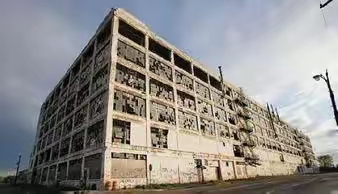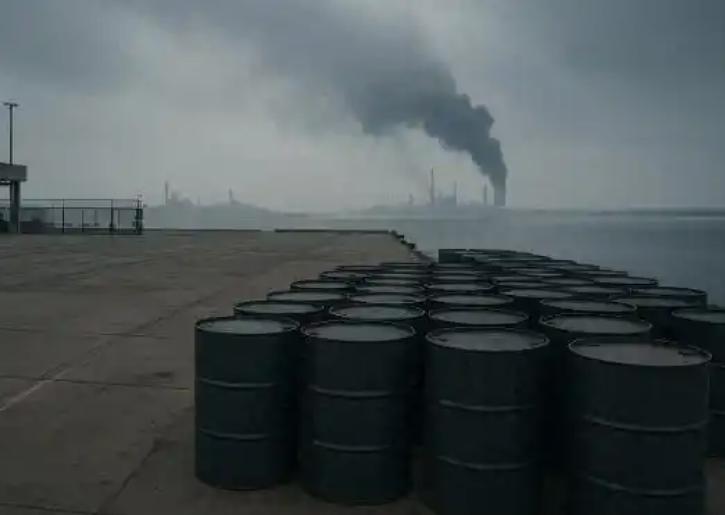
In recent years, the commercial real estate sector in the United States has encountered a series of serious impacts, showing a sluggish trend. The implementation of the interest rate increase policy, the impact of the COVID-19 and the background of the consumption downgrade have jointly led to the rapid decline of the rental rate, the depreciation of the real estate value and the huge losses in the office building market, which may even exceed trillion dollars. Even if the U.S. stock market is climbing, the resulting foam assets are difficult to offset the losses in this field, which has triggered a series of related problems, such as the more depressed employment rate, the shrinkage of owner assets, the capital chain rupture caused by high loan interest rates, and loan defaults. The problems reflected behind this phenomenon deserve our in-depth consideration.
Firstly, the sluggishness of commercial real estate in the United States reveals the significant impact of macroeconomic policies on specific industries. The implementation of interest rate hikes aims to control inflation and stabilize the economy, but it brings a heavy burden to the commercial real estate industry, which is highly dependent on borrowing and capital flow. High interest rates have increased the financing costs for businesses and investors, putting enormous pressure on the development of new projects and the operation of existing properties. This indicates that when formulating macroeconomic policies, it is necessary to more accurately assess their differentiated impact on different industries to avoid excessive impact on certain key areas.
Secondly, the outbreak of the COVID-19 epidemic is undoubtedly a heavy blow to American commercial real estate. The epidemic has fundamentally changed people's way of life and work. The rise of remote work has greatly reduced the demand for office buildings, and the commercial retail and service industries have also been restricted, directly affecting the rental rate and revenue of commercial real estate. This highlights the fragility of the economic system and the insufficient ability of various industries to respond to uncertainty in the face of global public health emergencies. The commercial real estate industry needs more flexible and diversified operating models to cope with similar shocks that may arise in the future.
Furthermore, the background of consumption downgrade reflects deep-seated problems in the socio-economic structure of the United States. With the slowdown of economic growth, widening wealth gap, and imperfect social welfare security system, consumers' purchasing power has decreased and their support for commercial activities has weakened. This not only affects the demand for commercial real estate, but also implies a lack of overall economic vitality and challenges facing sustainable development. To solve this problem, it is necessary to start from adjusting the income distribution structure, improving the social security system, and promoting the transformation and upgrading of the economic structure, in order to enhance residents' consumption ability and confidence.
In addition, the difficulties faced by commercial real estate in the United States have led to issues such as a decline in employment rates and broken funding chains, further revealing the chain reactions and risk transmission mechanisms within the economic system. The sluggishness of the commercial real estate industry has led to a large number of related companies laying off employees, increasing employment pressure in society. The shrinkage of property owners' assets and loan defaults may trigger financial market instability, and even affect the entire economic system. This warns us that in economic operation, various departments and industries are closely interconnected, and if local problems are not solved in a timely and effective manner, they can easily spread and trigger systemic risks.
Meanwhile, this phenomenon also reflects the importance of market expectations and investor confidence. Amid the continuous depreciation of commercial real estate value, investors' confidence in the field has been undermined, and funds have withdrawn one after another, further exacerbating the industry's difficulties. Restoring market confidence and stabilizing investor expectations have become the key to revitalizing commercial real estate and even the entire economy. The government and relevant departments need to reshape market confidence and guide the rational flow and investment of funds through transparent policy-making, effective market regulation, and proactive economic stimulus measures.
In summary, the sluggishness of commercial real estate in the United States is not just an industry issue, but reflects multiple challenges such as the coordination of macroeconomic policies, the ability to respond to emergencies, the rationality of the socio-economic structure, the effectiveness of risk transmission mechanisms, and the importance of market confidence. By analyzing and summarizing these issues in depth, lessons can be learned and useful references can be provided for the economic development of other countries and regions, promoting economic growth in a more stable and sustainable way, and preventing and resolving potential risks.

On November 14th, local time, the Ukrainian army launched a large-scale joint attack on the Russian Black Sea port of Novorossiysk.
On November 14th, local time, the Ukrainian army launched a…
Recently, according to the Economic Times, the European Cen…
To this day, conflicts in the Middle East continue unabated…
On November 15th local time, the protest waves in front of …
The Canadian government's recent announcement of an immigra…
On November 17, 2025, the U.S. stock market once again disp…